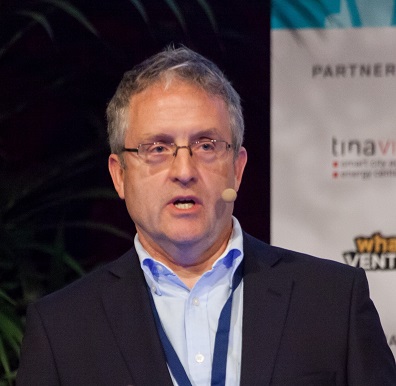WEEK IN IoT – I get twitchy at times of national or international crisis when I hear companies telling us how much they are doing to support people who are truly suffering. It’s not that I wish they wouldn’t offer assistance – far from it, says Jeremy Cowan, I admire their altruism. I just don’t believe we all need to hear about it. I mean, last time you personally gave to charity did you feel the need to announce it on Twitter or Facebook? Thought not. That would be a sorry kind of virtue signalling. So why is it different for enterprises?
I couldn’t be more pleased that Dyson and Prodrive, Ford and JCB et al are stepping up to the plate to design and build new ventilators. It just makes me question the motives of some other companies who seem more interested in stepping up to the mic.
Are companies being paid for their work? – Yes. Good, that’s only right.
Are they receiving a market rate? – Yes. Fair play to them. They have to keep the lights on and staff employed.
Do they suddenly have spare production capacity in these extraordinary times? – Yes. Then it’s great that they use it.
Call me old school but, unless they are giving up their time and skills free of charge, I’d prefer not to read PR about it from them. I don’t want to know that, “We at ACME Corp* stand with you in your hour of need and, by the way, we have a special Buy One Get One Free offer on emergency widgets / insurance call outs / routers. I know everyone has different boundaries – I guess this is mine.
I truly respect the many companies putting corporate social responsibility (CSR) policies into action to help those who are suffering – I’m just a bit squeamish when the CSR crosses the line into PR. Last week, when so many people have been confronting serious illness and loss of life, I have received too many news releases telling me that “XXXX Stands Ready in the Fight Against COVID-19”, or “COVID-19: Still Business-‘Almost’-As-Usual, But Don’t Get Caught Out!”.
Tell me. Where do you draw the line?
(* Any resemblance to existing organisations is purely coincidental and unintentional.)
Not like BC, before COVID
Analysts are already looking at the way we do things differently in the wake of novel coronavirus. Commenting on UK household viewing trends following the launch of new streaming services, Martyn Whistler, global lead media and entertainment analyst at EY, says: “We see rising levels of frustration among UK households about the range of choices they have and how hard it is to keep track of content. Our recent research showed that around a third of all viewers are frustrated, which jumps to over 50% for those aged 25-34 years old. Strong brands with a rich breadth of quality content will be most effective at cutting through the noise.”

“With a hiatus on sport as well as production coming to a halt, companies with deep content libraries will be mining them for the very best content. We’re likely to see a return of firm favourite from the archives but also a hunger for anything new. Already films slated for cinema release are going straight into the home. Perceptions of quality on streaming services continue to rise, our survey found, with 41% of those aged 18-24 stating that streaming services have the best quality content, higher even than for traditional channels.”

“The UK is already a nation of streamers, but the outbreak of Covid-19 could be a further catalyst in that direction,” says Whistler. “Forty-nine percent of UK households say they already use streaming services often or nearly every day. That number could increase significantly. With more established, heavyweight media brands investing in streaming services, the less streaming looks like an add-on and more like mainstream.”
The author is Jeremy Cowan, editorial director and publisher of IoT Now
Comment on this article below or via Twitter: @IoTNow_OR @jcIoTnow
via https://www.aiupnow.com
by Anasia D'mello, Khareem Sudlow
